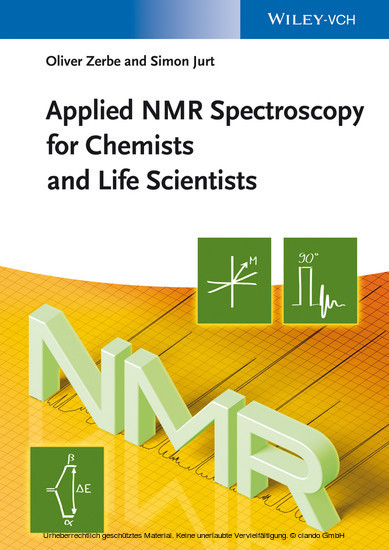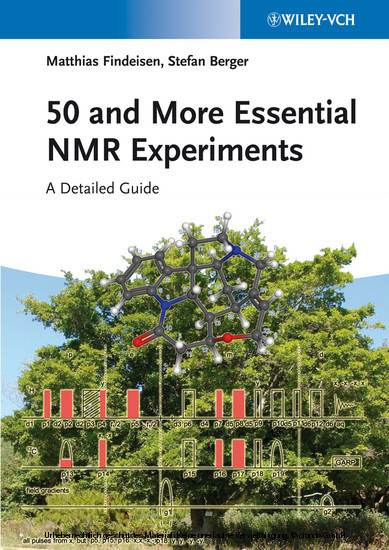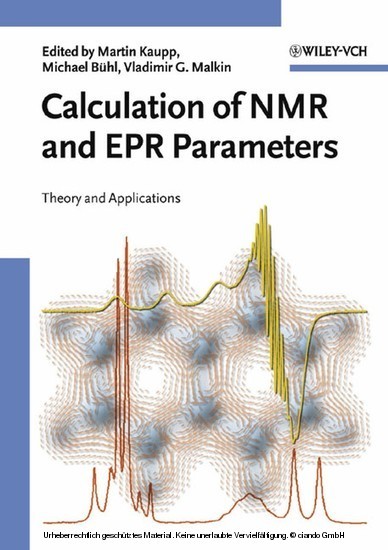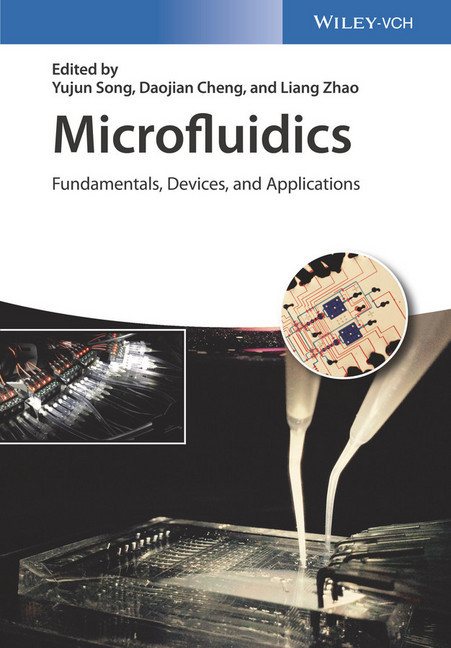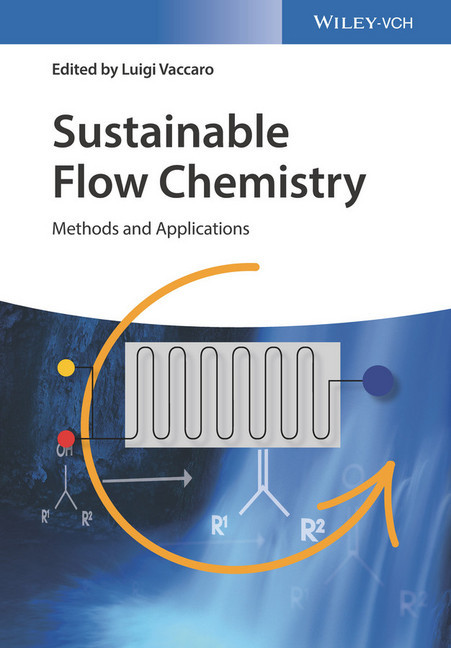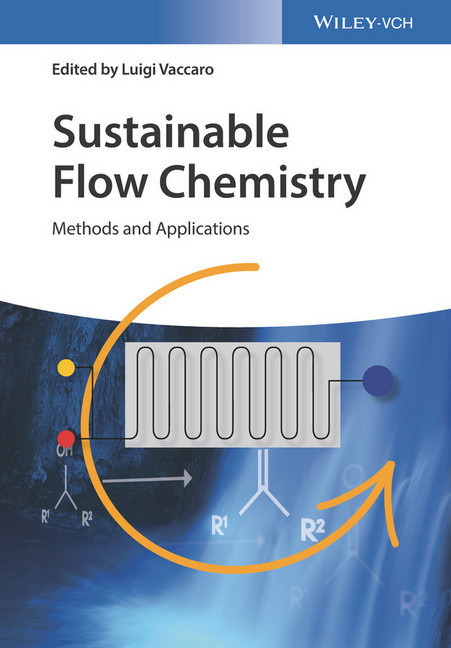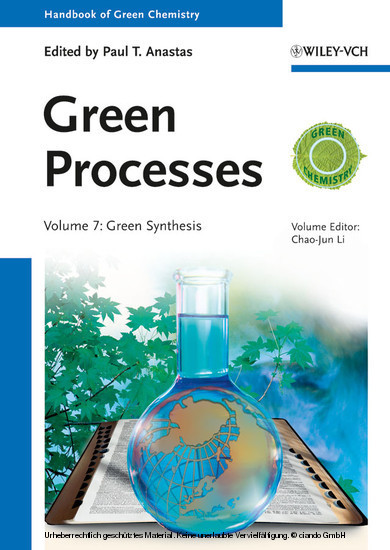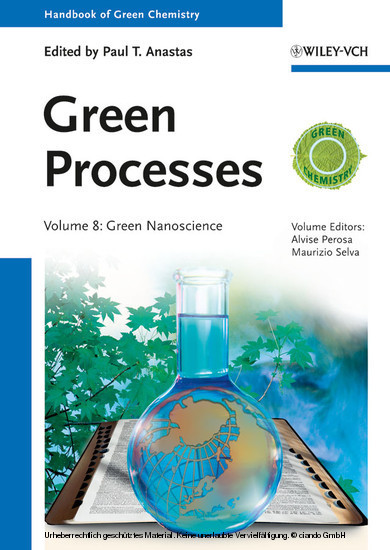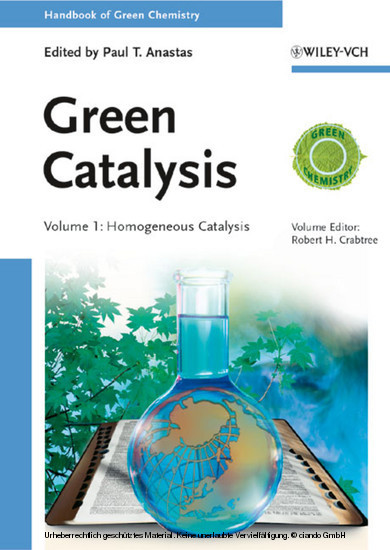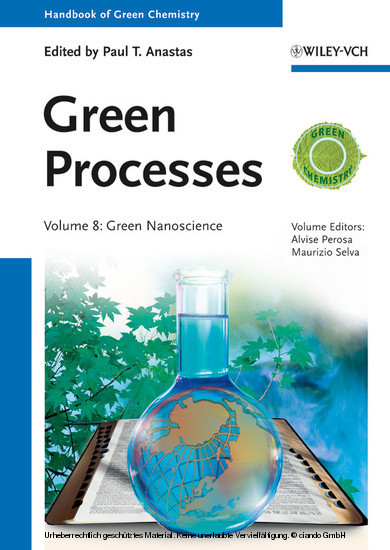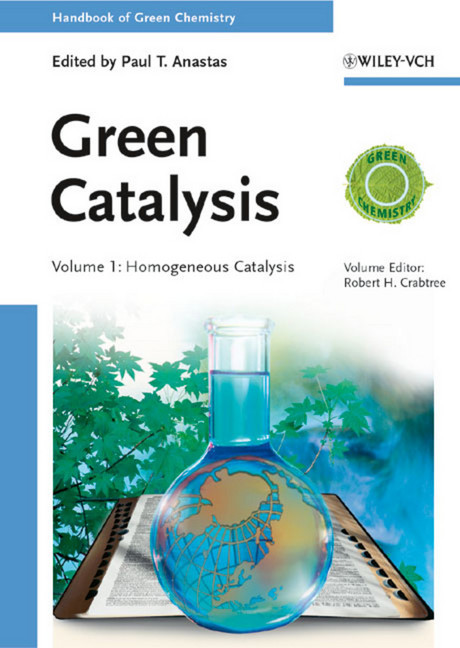Applied NMR Spectroscopy for Chemists and Life Scientists
From complex structure elucidation to biomolecular interactions - this applicationoriented textbook covers both theory and practice of modern NMR applications.
Part one sets the stage with a general description of NMR introducing important parameters such as the chemical shift and scalar or dipolar couplings. Part two describes the theory behind NMR, providing a profound understanding of the involved spin physics, deliberately kept shorter than in other NMR textbooks, and without a rigorous mathematical treatment of all the physico-chemical computations. Part three discusses technical and practical aspects of how to use NMR. Important phenomena such as relaxation, exchange, or the nuclear Overhauser effects and the methods of modern NMR spectroscopy including multidimensional experiments, solid state NMR, and the measurement of molecular interactions are the subject of part four. The final part explains the use of NMR for the structure determination of selected classes of complex biomolecules, from steroids to peptides or proteins, nucleic acids, and carbohydrates.
For chemists as well as users of NMR technology in the biological sciences.
Oliver Zerbe is the head of the NMR department at the University of Zurich. He studied chemistry and obtained his PhD under the supervision of Wolfgang von Philipsborn in Zurich. After a postdoctoral stay in the group of Kurt Wuthrich at the ETH Zurich he conducted his habilitation with Gerd Folkers at the Institute of Pharmaceutical Sciences at the ETH. In 2003 he returned to his present location at the University of Zurich, where he is now a professor in the Department of Chemistry. His main interests are structures of proteins, particularly of membrane proteins. Oliver Zerbe is the author of approximately 100 scientific publications in peer-reviewed journals and has edited one book, 'NMR in drug research'. After studying chemistry at the University of Applied Sciences of Bern,
Simon Jurt has been working for more than ten years in the NMR department of the University of Zurich. In addition to maintenance and trouble shooting of the NMR spectrometers, he introduces the students to the secrets of NMR spectroscopy, teaches practical NMR courses and is involved in several research projects. His main interests are the experimental NMR techniques, which allow obtaining a plethora of chemo-physical information from the spin physics.
Part one sets the stage with a general description of NMR introducing important parameters such as the chemical shift and scalar or dipolar couplings. Part two describes the theory behind NMR, providing a profound understanding of the involved spin physics, deliberately kept shorter than in other NMR textbooks, and without a rigorous mathematical treatment of all the physico-chemical computations. Part three discusses technical and practical aspects of how to use NMR. Important phenomena such as relaxation, exchange, or the nuclear Overhauser effects and the methods of modern NMR spectroscopy including multidimensional experiments, solid state NMR, and the measurement of molecular interactions are the subject of part four. The final part explains the use of NMR for the structure determination of selected classes of complex biomolecules, from steroids to peptides or proteins, nucleic acids, and carbohydrates.
For chemists as well as users of NMR technology in the biological sciences.
Oliver Zerbe is the head of the NMR department at the University of Zurich. He studied chemistry and obtained his PhD under the supervision of Wolfgang von Philipsborn in Zurich. After a postdoctoral stay in the group of Kurt Wuthrich at the ETH Zurich he conducted his habilitation with Gerd Folkers at the Institute of Pharmaceutical Sciences at the ETH. In 2003 he returned to his present location at the University of Zurich, where he is now a professor in the Department of Chemistry. His main interests are structures of proteins, particularly of membrane proteins. Oliver Zerbe is the author of approximately 100 scientific publications in peer-reviewed journals and has edited one book, 'NMR in drug research'. After studying chemistry at the University of Applied Sciences of Bern,
Simon Jurt has been working for more than ten years in the NMR department of the University of Zurich. In addition to maintenance and trouble shooting of the NMR spectrometers, he introduces the students to the secrets of NMR spectroscopy, teaches practical NMR courses and is involved in several research projects. His main interests are the experimental NMR techniques, which allow obtaining a plethora of chemo-physical information from the spin physics.
1;Applied NMR Spectroscopy for Chemists and Life Scientists;1 1.1;Contents;7 1.2;Preface;17 1.3;1 Introduction to NMR Spectroscopy;21 1.3.1;1.1 Our First 1D Spectrum;21 1.3.2;1.2 Some Nomenclature: Chemical Shifts, Line Widths, and Scalar Couplings;22 1.3.3;1.3 Interpretation of Spectra: A Simple Example;25 1.3.4;1.4 Two-Dimensional NMR Spectroscopy: An Introduction;29 1.4;Part One Basics of Solution NMR;31 1.4.1;2 Basics of 1D NMR Spectroscopy;33 1.4.1.1;2.1 The Principles of NMR Spectroscopy;33 1.4.1.2;2.2 The Chemical Shift;36 1.4.1.3;2.3 Scalar Couplings;37 1.4.1.4;2.4 Relaxation and the Nuclear Overhauser Effect;40 1.4.1.5;2.5 Practical Aspects;43 1.4.1.5.1;2.5.1 Sample Preparation;43 1.4.1.5.2;2.5.2 Referencing;45 1.4.1.5.3;2.5.3 Sensitivity and Accumulation of Spectra;47 1.4.1.5.4;2.5.4 Temperature Calibration;49 1.4.1.6;2.6 Problems;50 1.4.1.7;Further Reading;51 1.4.2;3 1H NMR;53 1.4.2.1;3.1 General Aspects;53 1.4.2.2;3.2 Chemical Shifts;54 1.4.2.2.1;3.2.1 Influence of Electronegativity of Substituents;55 1.4.2.2.2;3.2.2 Anisotropy Effects;55 1.4.2.2.3;3.2.3 Other Factors Affecting Chemical Shifts: Solvent, Temperature, pH, and Hydrogen Bonding;57 1.4.2.2.4;3.2.4 Shift Reagents;57 1.4.2.3;3.3 Spin Systems, Symmetry, and Chemical or Magnetic Equivalence;59 1.4.2.3.1;3.3.1 Homotopic, Enantiotopic, and Diastereotopic Protons;62 1.4.2.3.2;3.3.2 Determination of Enantiomeric Purity;63 1.4.2.4;3.4 Scalar Coupling;64 1.4.2.4.1;3.4.1 First-Order Spectra;65 1.4.2.4.2;3.4.2 Higher-Order Spectra and Chemical Shift Separation;67 1.4.2.4.3;3.4.3 Higher-Order Spectra and Magnetic Equivalence;69 1.4.2.5;3.5 1H-1H Coupling Constants;70 1.4.2.5.1;3.5.1 Geminal Couplings;70 1.4.2.5.2;3.5.2 Vicinal Couplings;70 1.4.2.5.3;3.5.3 Long-Range Couplings;72 1.4.2.5.4;3.5.4 1H Couplings to Other Nuclei;72 1.4.2.6;3.6 Problems;74 1.4.2.7;Further Reading;75 1.4.3;4 NMR of 13C and Heteronuclei;77 1.4.3.1;4.1 Properties of Heteronuclei;77 1.4.3.2;4.2 Indirect Detection of Spin-1/2 Nuclei;79 1.4.3.3;4.3 13C NMR Spectroscopy;79 1.4.3.3.1;4.3.1 The 13C Chemical Shift;80 1.4.3.3.2;4.3.2 X,13C Scalar Couplings;84 1.4.3.3.3;4.3.3 Longitudinal Relaxation of 13C Nuclei;88 1.4.3.3.4;4.3.4 Recording 13C NMR Spectra;88 1.4.3.4;4.4 NMR of Other Main Group Elements;90 1.4.3.4.1;4.4.1 Main Group Nuclei with I=1/2;91 1.4.3.4.2;4.4.2 Main Group Nuclei with I> 1/2;95 1.4.3.5;4.5 NMR Experiments with Transition Metal Nuclei;98 1.4.3.5.1;4.5.1 Technical Aspects of Inverse Experiments with I=1/2 Metal Nuclei;99 1.4.3.5.2;4.5.2 Experiments with Spin I> 1/2 Transition Metal Nuclei;101 1.4.3.6;4.6 Problems;102 1.4.3.7;Further Reading;104 1.5;Part Two Theory of NMR Spectroscopy;105 1.5.1;5 Nuclear Magnetism - A Microscopic View;107 1.5.1.1;5.1 The Origin of Magnetism;107 1.5.1.2;5.2 Spin - An Intrinsic Property of Many Particles;108 1.5.1.3;5.3 Experimental Evidence for the Quantization of the Dipole Moment: The Stern-Gerlach Experiment;113 1.5.1.4;5.4 The Nuclear Spin and Its Magnetic Dipole Moment;114 1.5.1.5;5.5 Nuclear Dipole Moments in a Homogeneous Magnetic Field: The Zeeman Effect;116 1.5.1.5.1;5.5.1 Spin Precession;118 1.5.1.6;5.6 Problems;123 1.5.2;6 Magnetization - A Macroscopic View;125 1.5.2.1;6.1 The Macroscopic Magnetization;125 1.5.2.2;6.2 Magnetization at Thermal Equilibrium;126 1.5.2.3;6.3 Transverse Magnetization and Coherences;128 1.5.2.4;6.4 Time Evolution of Magnetization;129 1.5.2.4.1;6.4.1 The Bloch Equations;130 1.5.2.4.2;6.4.2 Longitudinal and Transverse Relaxation;132 1.5.2.5;6.5 The Rotating Frame of Reference;135 1.5.2.6;6.6 RF Pulses;137 1.5.2.6.1;6.6.1 Decomposition of the RF Field;138 1.5.2.6.2;6.6.2 Magnetic Fields in the Rotating Frame;139 1.5.2.6.3;6.6.3 The Bloch Equations in the Rotating Frame;140 1.5.2.6.4;6.6.4 Rotation of On-Resonant and Off-Resonant Magnetizationunder the Influence of Pulses;141 1.5.2.7;6.7 Problems;142 1.5.3;7 Chemical Shift and Scalar and Dipolar Couplings;145 1.5.3.1;7.1 Chemical Shielding;145 1.5.3.1.1;7.1.1 The
| ISBN | 9783527677832 |
|---|---|
| Artikelnummer | 9783527677832 |
| Medientyp | E-Book - ePUB |
| Copyrightjahr | 2013 |
| Verlag | Wiley-VCH |
| Umfang | 548 Seiten |
| Sprache | Englisch |
| Kopierschutz | Adobe DRM |

